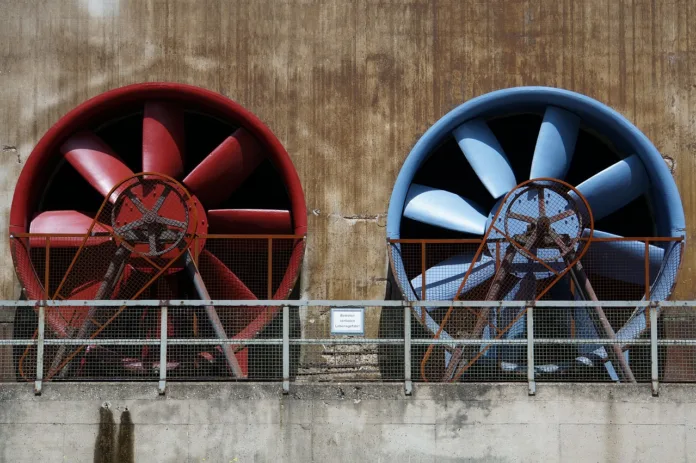In the fast-paced world of commercial kitchens, efficient ventilation is not only a luxury; it’s a necessity. To maintain a healthy and productive environment, investing in the right commercial exhaust fan and kitchen exhaust hood is important.
This comprehensive guide highlights the key considerations when purchasing these essential components, ensuring that you make an informed decision to master ventilation in your commercial space.
Understanding the Importance of Ventilation in Commercial Kitchens
Before learning the specifics of commercial exhaust fans and hoods, understand why ventilation is vital in a commercial kitchen setting. These spaces are characterised by high temperatures, heavy equipment usage, and the production of copious amounts of heat, grease, and odours. Without proper ventilation, these elements can accumulate, leading to uncomfortable working conditions, health hazards, and even fire risks.
A well-designed ventilation system helps remove heat, grease, smoke, and odours from the kitchen, ensuring a comfortable working environment for staff and maintaining air quality. It prevents the build-up of harmful substances that could compromise the health and safety of employees and customers.
Key Considerations for Commercial Exhaust Fans
- Airflow Capacity: The consideration for buying a commercial exhaust fan is its airflow capacity, measured in cubic feet per minute (CFM). Calculate the required CFM based on the size of your kitchen and the type of cooking equipment you use. Choose a fan that can handle the volume of air generated in your specific environment.
- Type of Exhaust Fan: Commercial exhaust fans come in various types, including roof-mounted fans, wall-mounted fans, and inline fans. The choice depends on the kitchen layout and the available space. Roof-mounted fans are ideal for kitchens with limited wall space, while wall-mounted fans are suitable for kitchens with ample wall space but limited roof access.
- Noise Level: Commercial kitchens have noisy environments, so selecting an exhaust fan with a low noise level is crucial. Check the fan’s decibel (dB) rating and aim for a model that operates quietly without compromising performance.
- Energy Efficiency: As sustainability becomes increasingly important, opting for an energy-efficient exhaust fan can be a smart choice. Look for fans with energy-efficient motors and features like variable speed controls that allow you to adjust the fan’s speed based on the kitchen’s needs.
- Ease of Maintenance: Regular maintenance is essential for the longevity and efficiency of your exhaust fan. Choose a model that is clean and easy to access. Some fans have features like removable grease cups or dishwasher-safe components, making maintenance a breeze.
Choosing the Right Commercial Kitchen Exhaust Hood
- Type of Hood: Commercial kitchen exhaust hoods are available in different types, each designed for specific cooking equipment and applications. Common types include canopy hoods, proximity hoods, and island hoods. Ensure that the hood you choose is suitable for the layout and equipment in your kitchen.
- Material and Construction: Commercial kitchen hoods are made of stainless steel due to its durability and corrosion resistance. Ensure the hood is constructed with high-quality materials and features a well-designed baffle system to capture grease effectively.
- Fire Safety Features: Safety should always be a top priority in a commercial kitchen. Choose a hood that complies with fire safety regulations and features fire suppression systems. This extra layer of protection can be invaluable in preventing and controlling kitchen fires.
- Ductwork and Ventilation System Design: The efficiency of your ventilation system is not only dependent on the exhaust fan and hood; the ductwork and overall system design are equally important. Ensure that the ductwork is properly sized and designed to facilitate the smooth flow of air and prevent grease build-up.
- Compliance with Codes and Regulations: Different regions have specific codes and regulations governing commercial kitchen ventilation. Ensure the exhaust hood you choose complies with local building codes, fire safety regulations, and health department requirements.
Where to Buy Commercial Exhaust Fans and Kitchen Exhaust Hoods ?
After understanding the key considerations to buy commercial exhaust fans and hoods, the next step is finding a reliable supplier. When searching for these essential components, consider reputable suppliers specialising in commercial kitchen ventilation equipment. Online platforms, specialised kitchen equipment stores, and HVAC suppliers are good places to start your search.
Look for suppliers offering a range of products to cater to different kitchen sizes and requirements. Read customer reviews to gauge the performance and durability of the products, and don’t hesitate to reach out to the supplier for additional information or assistance in choosing the right equipment for your specific needs.
Conclusion
Mastering ventilation in your commercial kitchen requires consideration of the commercial exhaust fan and kitchen exhaust hood. By selecting the right equipment based on airflow capacity, type, noise level, energy efficiency, and ease of maintenance, you can create a healthy, comfortable, and safe working environment.
Compliance with codes and regulations, as well as attention to fire safety features and ductwork design, are essential for a well-rounded ventilation system. When ready to purchase, choose a reliable supplier that offers high-quality products and excellent customer support. With these considerations in mind, you’ll be well on your way to achieving optimal ventilation in your commercial kitchen in 2024.


